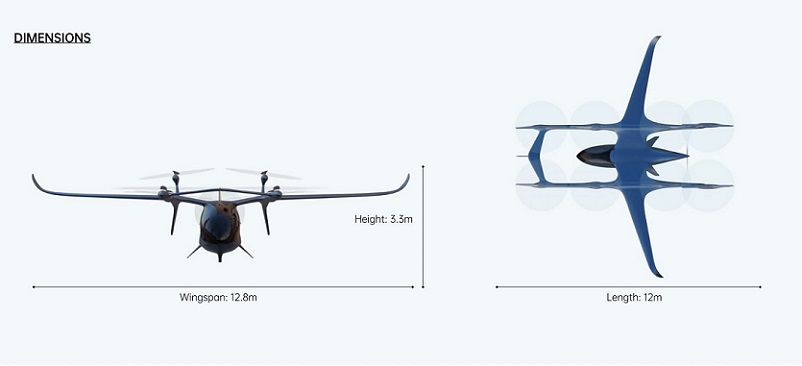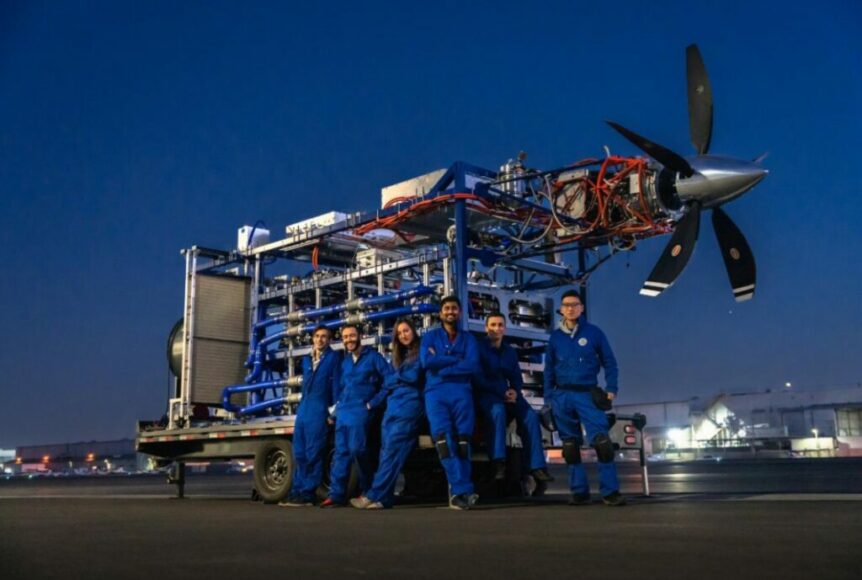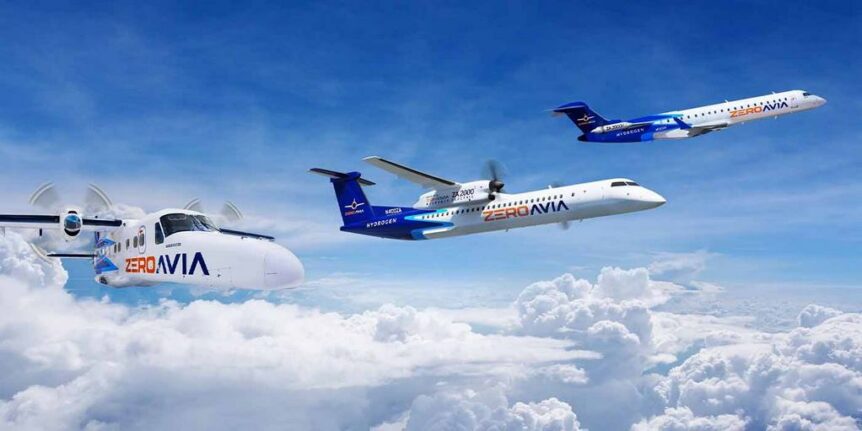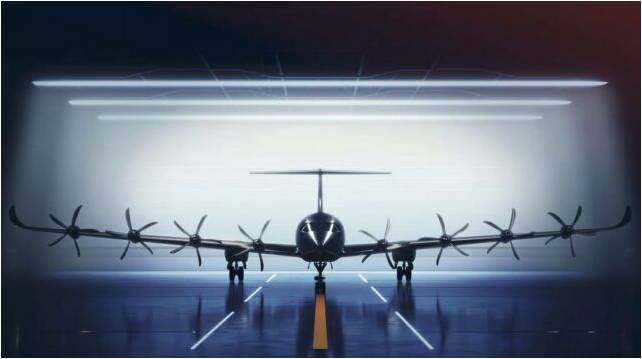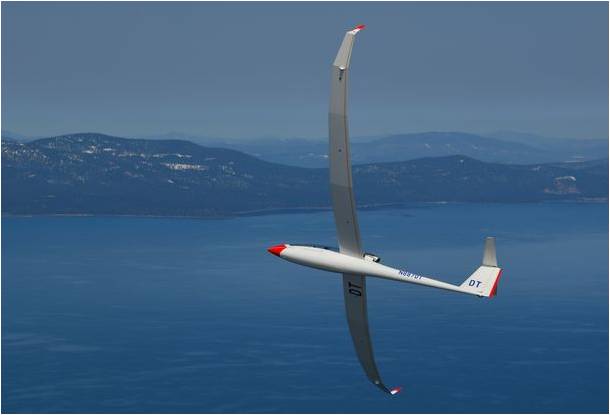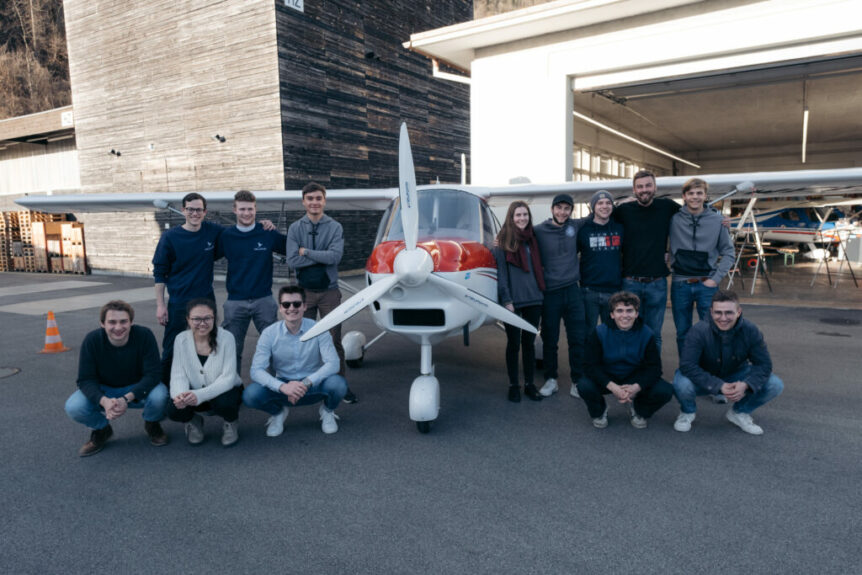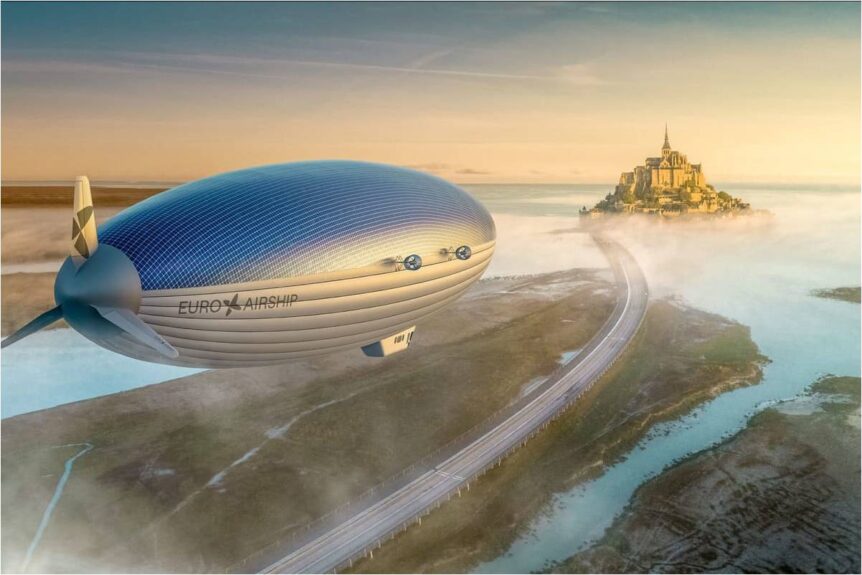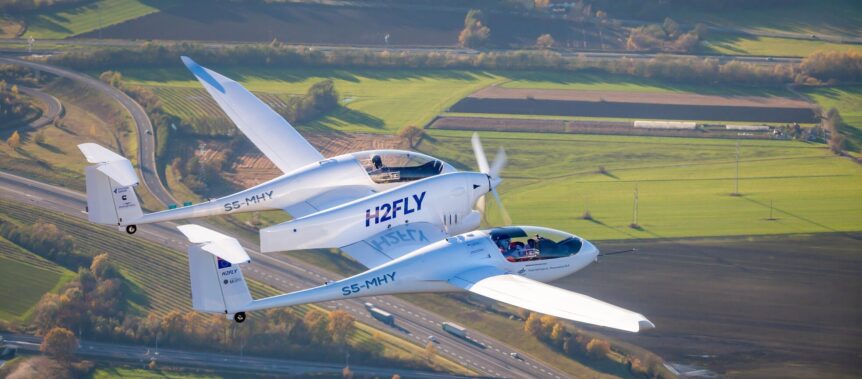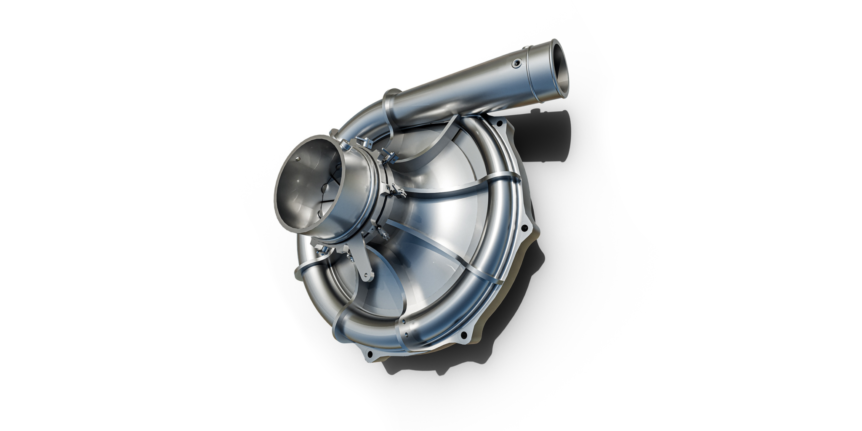AutoFlight, the Chinese firm founded by Tian Yu (Yuneec), celebrated two milestones, although maybe not “firsts” as described in the company’s press releases. Both, however, are impressive and worthy of note. First Intercity Flight AutoFlight claims to have flown the first inter-city electric air-taxi demonstration flight between the southern Chinese cities of Shenzhen and Zhuhai. In an autonomous trip, AutoFlight’s five-seat Prosperity eVTOL (electric Vertical Take Off and Landing) aircraft flew the 50km (31 miles) route from Shenzhen to Zhuhai. The flight across the Pearl River Delta took just 20 minutes, a journey that would require three hours by car. For those with the funds to make the flight the difference in time is incalculable. According to the company, “This marks the first public flight of an eVTOL aircraft on a cross-sea and inter-city route, spanning across the bay where the Pearl River meets the sea, connecting the two southern Chinese cities.” In 2021, Australians flew a Pipstrel Alpha Electro …
Universal Hydrogen End-to-End
In an “end-to-end” demonstration of its proprietary liquid hydrogen module, Universal Hydrogen Co. has successfully run a megawatt-class fuel cell powertrain. “End-to-End,” in this case means “[the] demonstration of a hydrogen molecule moving from our filler/dispenser into our storage module and then into our powertrain is the first time that all the pieces of our product portfolio for regional aviation have come together,” said Paul Eremenko, co-founder and CEO of Universal Hydrogen. “The next step is to upgrade our flight testbed to fly the powertrain fueled by our modules.” In a simplified interface for a complex process, the liquid hydrogen module “is the core of the company’s fuel services offering for aviation.” Looking like any other intermodal freight and airport cargo handling equipment, each module contains 200 kilograms (440 pounds) of liquid hydrogen. Capable of storing it for long periods without boiloff, the module’s internal systems convert the cryogenic H2 into a warm gaseous H2 consumed by the powertrain Designed …
Climate Impulse – Not at All Impulsive
Born of the heritage of the Solar Impulse Foundation and taking it further, Climate Impulse wants to showcase concrete technologies that can revolutionize the aviation industry, and the mobility sector in general. Two Well-Travelled Partners We are all familiar with the exploits of Bertrand Piccard, which include the first circumnavigations of the globe in a balloon and more recently in a solar aircraft. He comes from a family of explorers who have climbed the heights and plumbed the depths of our world. We are probably less familiar with an equally intrepid adventurer, Raphael Dinelli. Dinelli attempted a solar circumnavigation of the globe as part of the 1996-1997 Globe Vendee competition. He didn’t quite make it full circle, sinking in the Indian Ocean. The Australian Air Force dropped a life raft to him and then he was pulled to safety by another competitor, Peter Goss. According to Wikipedia, “He went on to sail with Goss in the 1997 edition of the …
ZeroAvia Cryo-Compresses Hydrogen
ZeroAvia, already deploying hydrogen as a main part of its flight program, is exploring the use of cryo-compressor technology to deliver more energy dense H2 for longer flights. If we think of gasoline or Diesel fuel as “Cream of Energy Soups,” we might understand their preeminence as energy carriers. A U. S. gallon (3.8 liters) of Gasoline for instance, contains about 33.4 kilowatt-hours of energy. Compare this to a state-of-the-art lithium battery, which tops out at around 0.5 kW-hrs. A Diesel engine might be able to convert 50 percent of that to useful work, with the rest going to waste heat. A gasoline engine fares even worse, extracting perhaps 30 percent as work and 70 percent as waste heat. Electric Motors, however, are highly energy efficient, some extracting up to 97 percent of a battery’s stored energy. If one uses hydrogen instead of batteries, one can reach parity with the amount of energy available to spin the propellers. As early …
E9X: 90 Passengers, 480 Battery Miles
What can carry 90 passenger 480 miles on battery power alone? Such a query flies in the face of others’ efforts to hybridize medium-range flight, but may be answered by Delft-based Elysian Aircraft. Their eight-motored, battery-powered E9X uses a backup turbogenerator only for reserves, putting a level of trust in the 365 Watt-hour per kilogram cells buried within the long, slender wing for safe transit. Graham Warwick’s Article Graham Warwick, writing for Aviationweek.com, explains that, “Breaking with traditional design principles, Delft-based Elysian says it has found design space where a large electric aircraft looks viable with near-term battery technology.” That kind of range for that large an aircraft seems extreme, but the E9X’s developers are using currently-available batteries to achieve their goals. Reynard de Vries, director of design and engineering at Elysian, explains, “If you want to make a significant impact on the sector as a whole, then you need to electrify flights up to 1,000 km [620 mi.]. Then …
Airbus and Perlan Check out Hydrogen
Airbus, through its partnership with the Perlan Project, is investigating how to clean vapor trails from the high-flown paths traversed by airliners. Through its pair of Blue Condor jet-powered sailplanes, Airbus and Perlan are working toward a contrail-measuring mission in 2024. Hydrogen, the most abundant element in the universe, has been a rarity in the aviation world, other than in well-publicized events involving gas-fueled conflagrations. (Whether the H2 carrying the Hindenburg aloft or the fabric skin covering the great ship’s frame caused the fire at Lakehurst, New Jersey in 1937 is still somewhat controversial.) Regardless, the disaster brought about a deep mistrust of hydrogen that persists to this day. Airbus, along with the Perlan Project, looks forward to exploiting H2’s advantages while overcoming its undeserved stigma and surprising issues. Perlan’s Greater Mission The Perlan Project has achieved an enviable string of record flights culminating in the 2018 altitude record of 76,114 feet. Carrying CubeSats filled with science experiments developed by …
The Cellsius AC4 Hydrogen Project
The Cellsius AC4 Lightwing is a capable microlight aircraft popular in Europe. As part of a project to clean up aviation, it will fly on hydrogen, and for good distances if students at ETH Zurich* are successful in their project. Students are modifying a Lightwing to run on pressurized H2, and crafting motor, fuel system, tanks, power electronics, and battery backup system to make a coordinated, custom-fitted craft. It will stay aloft for two hours and emit nothing but water vapor. The project’s web site spells out the students’ ambitions. “Our powertrain consists of many components that together can get an aircraft into the air. “To make this a reality, we develop the majority of our components ourselves, tailored to our requirements.” Components include a radial-flux motor, unusual in that most electric aircraft motors are axial flux. Students worked with e+a (Elektromaschinen und Antriebe) AG to design and construct the unit. With that motor, students helped design a matching inverter …
Solar Airship One – a Grand Voyage Awaits
Having circumnavigated the world by balloon and solar-powered aircraft, Bertrand Piccard is ready to make a third around-the-world flight – this time in Solar Airship One, powered by the sun and hydrogen fuel cells. Able to make the 40,000 kilometer (24,855 mile) trip in one gigantic hop, the 151 meters (495.4 feet) long craft will be borne aloft on 50,000 cubic meters (1,766,000 cubic feet) of helium. Unlike his lonely stints at the controls of Solar Impulse 2, Piccard will be joined by two worthy co-pilots; Dorine Bourneton, “The first disabled woman to become an aerobatic pilot (Bourneton was severely injured at age 16 in an aircraft accident) and Michel Tognini, a former French Air Force fighter pilot and European Space Agency astronaut (Tognini has been twice to space, in 1992 and 1999).” The Craft Its helium sealed in 15 large gas bags that emulate the shape of the airship, the ship carries 50,000 cubic meters (1.77 million cubic feet) …
H2Fly Achieves HEAVEN’s Goal
H2Fly has an historic aircraft in its fleet, the HY4, as part of the HEAVEN program to, “Demonstrate the use of liquid, cryogenic hydrogen in aircraft.” Originally the G4, the craft won the NASA Green Flight Challenge in 2011, posting a passenger mile per gallon efficiency of 403.5 – equivalent to driving your loaded Prius from San Francisco to Los Angeles on under four gallons of fuel. Resurrected as the HY4 and flown on gaseous hydrogen, the craft has been reconfigured to fly on liquid hydrogen, expanding its range significantly. According to the HEAVEN program, “The hydrogen-electric ‘HY4’ demonstrator aircraft took off from Maribor, Slovenia, and saw safe and efficient operation throughout multiple flight tests.” Announced September 7, these were the first piloted flights of a liquid hydrogen fueled aircraft. Four flights, including one that lasted over three hours, “Lay the foundation for long-range, emissions-free flight, with liquid hydrogen doubling the range of the HY4 aircraft to 1,500[kilometers], compared to …
ZeroAvia Turbo Charges a Fuel Cell
Turbo chargers were an early method of increasing power at altitude and that ZeroAvia is crafting for modern electric, fuel-cell powered aircraft. Mechanical Turbochargers During WWII, your editor’s father was a crew chief and occasional flight engineer on C-47’s, B-17’s, and B-24’s. The bombers had turbo-charged engines to increase power as noted below. (This is just part one of three training films, all on YouTube, giving some indication of the difficulties pilots faced in pre-electronic times.) The flight manual for the B-17 includes the following notes on the turbochargers. “The B-17F has four 1200 Hp Wright Cyclone Model R-1820-97 engines of the 9-cylinder, radial, air-cooled type with a 16-to-9 gear ratio. “Each engine has a turbo-supercharger to boost manifold pressure for takeoff and maintain sea-level pressure at high altitude.” B-24’s and other similar craft had the same type of system. (ZeroAvia’s rough equivalent is much quieter and a loss less smoky.) The manual notes the F models had manual control of …

